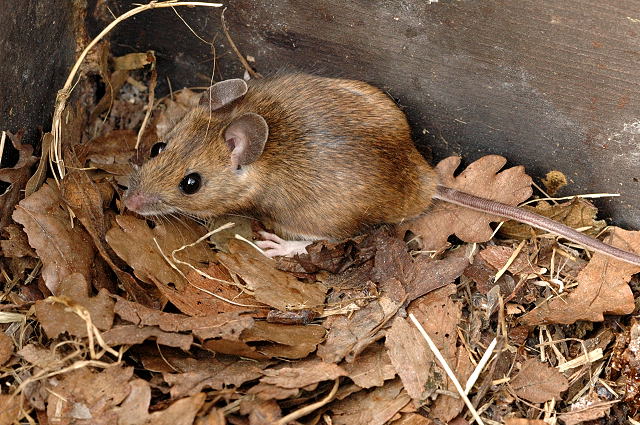It is hard to guess what a Yellow-necked mouse weights. But we have the answer:
An adult Yellow-necked mouse (Apodemus flavicollis) on average weights 31 grams (0.07 lbs).
The Yellow-necked mouse is from the family Muridae (genus: Apodemus). It is usually born with about 2 grams (0 lbs). They can live for up to 4 years. When reaching adult age, they grow up to 10.3 cm (0′ 5″). On average, Yellow-necked mouses can have babies 3 times per year with a litter size of 5.
As a reference: An average human weights in at 62 kg (137 lbs) and reaches an average size of 1.65m (5′ 5″). Humans spend 280 days (40 weeks) in the womb of their mother and reach around 75 years of age.

The yellow-necked mouse (Apodemus flavicollis), also called yellow-necked field mouse, yellow-necked wood mouse, and South China field mouse, is closely related to the wood mouse, with which it was long confused. It was only recognised as a separate species in 1894. It differs in its band of yellow fur around the neck and in having slightly larger ears and usually being slightly larger overall. Around 100 mm in length, it can climb trees and sometimes overwinters in houses. It is found mostly in mountainous areas of southern Europe, but extends north into parts of Scandinavia and Britain. It facilitates the spread of tick-borne encephalitis to humans and is a reservoir species for the Dobrava virus, a hantavirus that is responsible for causing haemorrhagic fever with renal syndrome.
Animals of the same family as a Yellow-necked mouse
We found other animals of the Muridae family:
- Giant white-tailed rat with a weight of 644 grams
- Chiriqui harvest mouse with a weight of 22 grams
- Chestnut climbing mouse with a weight of 8 grams
- Common rufous-nosed rat with a weight of 89 grams
- Lesser ranee mouse with a size of 6.5 cm (0′ 3″)
- Little native mouse with a weight of 8 grams
- Aegialomys xanthaeolus with a weight of 79 grams
- Eligmodontia typus with a weight of 17 grams
- Greater bandicoot rat with a weight of 583 grams
- Beaded wood mouse with a weight of 22 grams
Animals with the same weight as a Yellow-necked mouse
As a comparison, here are some other animals that weight as much as the Apodemus flavicollis:
- Natal multimammate mouse bringing 30 grams to the scale
- Large Asian roundleaf bat bringing 31 grams to the scale
- Chinese dormouse bringing 31 grams to the scale
- Gleaning mouse bringing 35 grams to the scale
- Western mouse bringing 34 grams to the scale
- Bailey’s pocket mouse bringing 27 grams to the scale
- White-winged vampire bat bringing 36 grams to the scale
- Wagner’s gerbil bringing 27 grams to the scale
- Stirton’s deer mouse bringing 29 grams to the scale
- Hispid pocket mouse bringing 35 grams to the scale
Animals with the same size as a Yellow-necked mouse
Not that size really matters, but it makes things comparable. So here are a couple of animals that are as big as Yellow-necked mouse:
- Long-nosed dasyure with a size of 12.2 cm (0′ 5″)
- Luzon Cordillera forest mouse with a size of 10.9 cm (0′ 5″)
- Bushveld elephant shrew with a size of 11.7 cm (0′ 5″)
- São Paulo grass mouse with a size of 8.8 cm (0′ 4″)
- Gray-bellied pencil-tailed tree mouse with a size of 9.4 cm (0′ 4″)
- Japanese shrew mole with a size of 9 cm (0′ 4″)
- Fresno kangaroo rat with a size of 9.7 cm (0′ 4″)
- Spinifex hopping mouse with a size of 10 cm (0′ 4″)
- Narrow-nosed harvest mouse with a size of 8.7 cm (0′ 4″)
- Aegialomys galapagoensis with a size of 11.2 cm (0′ 5″)
Animals with the same litter size as a Yellow-necked mouse
Here is a list of animals that have the same number of babies per litter (5) as a Yellow-necked mouse:
- Vagrant shrew
- White-tailed prairie dog
- Lesser hedgehog tenrec
- Long-clawed shrew
- Northwestern deer mouse
- Woosnam’s broad-headed mouse
- Fat-tailed false antechinus
- Striped skunk
- Social vole
- Lesser hairy-footed dunnart
Animals with the same life expectancy as a Yellow-necked mouse
Completely different animals, but becoming as old as a Yellow-necked mouse:
- Common planigale with an average maximal age of 4 years
- Lesser mole-rat with an average maximal age of 4.5 years
- Fat-tailed dunnart with an average maximal age of 4.25 years
- Wood mouse with an average maximal age of 4.33 years
- Woodland thicket rat with an average maximal age of 4.33 years
- Yellow-footed antechinus with an average maximal age of 3.5 years
- Long-legged myotis with an average maximal age of 4.25 years
- Sand-colored soft-furred rat with an average maximal age of 4 years
- Brown-tailed mongoose with an average maximal age of 4.75 years
- Striped field mouse with an average maximal age of 4 years
